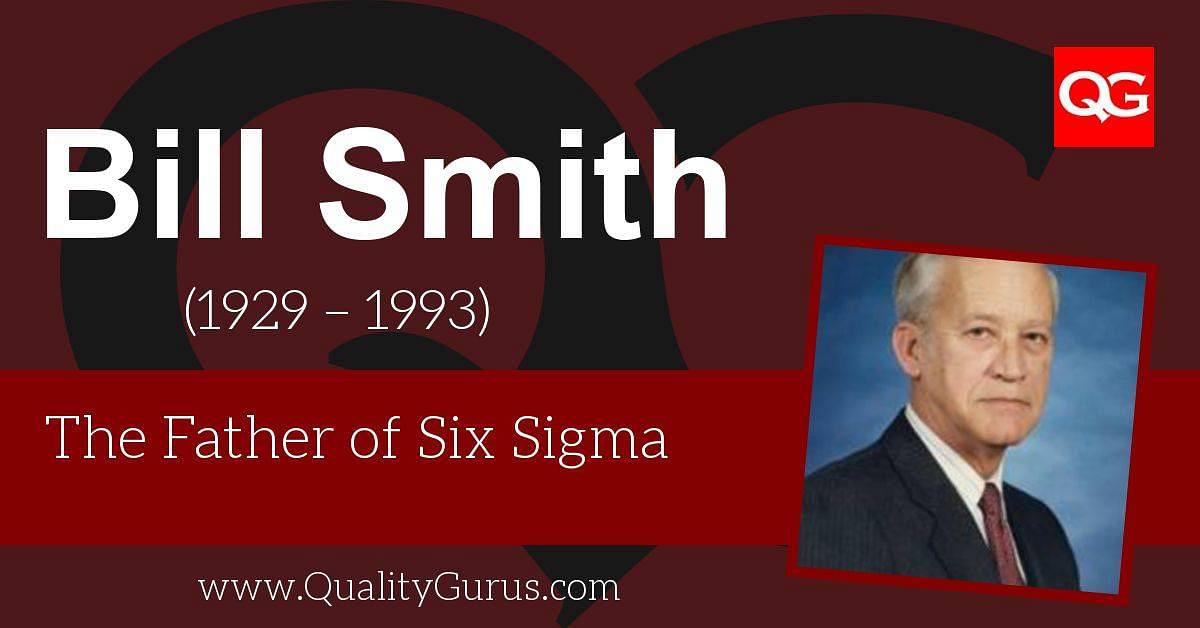Six Sigma is about accuracy. The system is influenced by but different than other management improvement strategies of the time including Total Quality Management and Zero Defects.
 History Of Six Sigma Quality Gurus
History Of Six Sigma Quality Gurus
One of the tools which form the basis of Six Sigma is the Control Chart.

Who created six sigma. National Quality Award in 1988. History of Six Sigma Developed by Mikel Harry and Bill Smith Motorola. Six Sigma is largely touted in the business media.
The focus is on process variations and emphasis is given to customer satisfaction. Overtime Ive grown the site to help tens of thousands of Six Sigma belt candidates prepare for their Green Belt Black Belt exams. The tools and philosophies behind it date back even further than that some being more than fifty years old.
Continuous process improvement with low defects is the goal of this method. Motorola engineer Bill Smith eventually became one of the pioneers of modern Six Sigma creating many of the methodologies still associated with Six Sigma in the late 1980s. The Goal of Six Sigma.
These quality tools were developed much before 1987. Sermin Vanderbilt is Founder of Lean and Six Sigma World Conference and President of the American Quality Institute. Six Sigma was first developed at Motorola during the late 1980s.
The History of Six Sigma Six sigma is by no means new. The Six Sigma Process of the DMAIC method has five phases. According to her Six Sigma is getting it right every time or most of the time 999 percent of the time.
Go here to learn how to pass your Six Sigma. Sign Up For Lean Six Sigma Training And Certification It was in the early 1980s that Bill Smith at Motorola developed this concept in order to measure defects and improve overall quality. Six Sigma is a quality-control methodology developed in 1986 by Motorola Inc.
Motorola was among the first recipients of the Malcolm Baldrige Award. Each of the above phases of business transformation has several steps. Six Sigma uses a data-driven management process used for optimizing and improving business processes.
At Motorola in the 1980s Mikel Harry and Bill Smith developed Six Sigma to make improvements on the manufacturing floor. The concepts that make up Six Sigma and Lean largely come from other concepts formed a long time before. More than simply a concept Six Sigma is a metric a methodology and a management system.
Lean for example heavily relies on the TPS created over several decades at. Motorola are widely acknowledged as the pioneers of the methodology and they introduced it over twenty years ago. The concept of Six Sigma was developed in 1987 by Motorola.
The roots of Six Sigma as a measurement standard can be traced back to Carl Friedrich Gauss 1777-1855 who introduced the concept of the normal curve. The method uses a data-driven review to limit mistakes or defects in a corporate or business process. Six Sigma was developed by Motorola in 1986 but it would be a mistake to think that that is when it all started.
Motorola was amongst the first recipients of the Malcolm Baldrige Award. The aim of Six Sigma is to make a process effective with - 9999996 defect-free. Almost every organization does need Six Sigma.
Six Sigma is a data-driven problem-solving methodology. Since its creation in 1986 it has gained such a solid. What is Six Sigma.
Six Sigma is basically a packaging of a lot of quality tools. Jack Welch later adopted Six Sigma at General Electric and saved billions of dollars putting the methodology to use. The methodology was pioneered by Bill Smith a quality engineer whose goal was to improve the way the quality and measurement systems worked so as to eliminate errors.
Today Six Sigma is used as one of the major themes for Total Quality Management TQM. The underlying framework is a strong customer focus and robust use of data and statistics to conclude.
